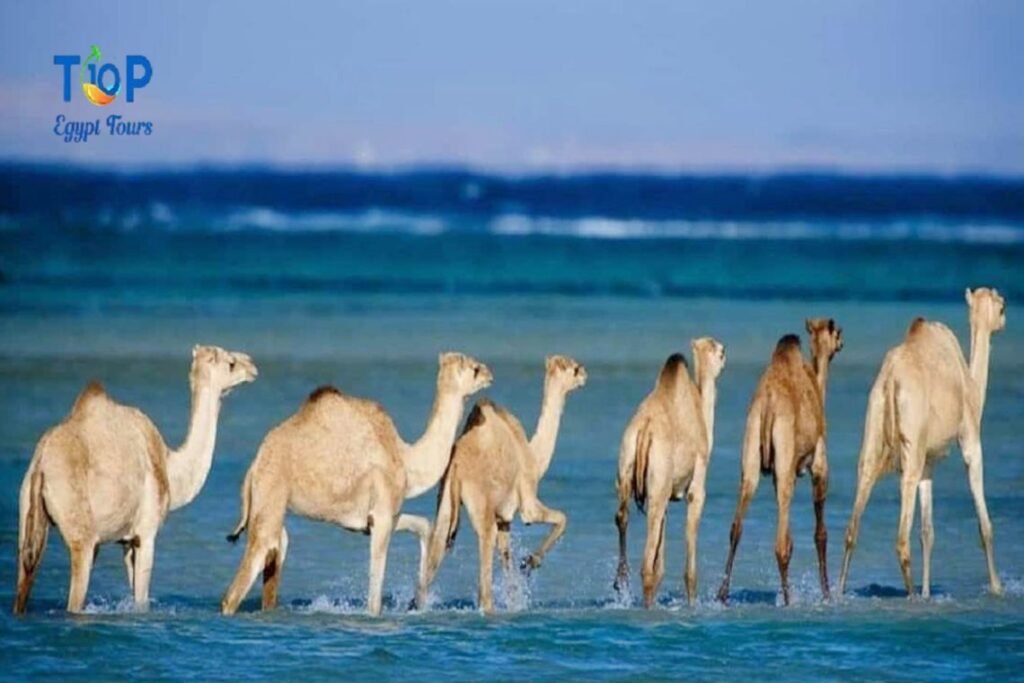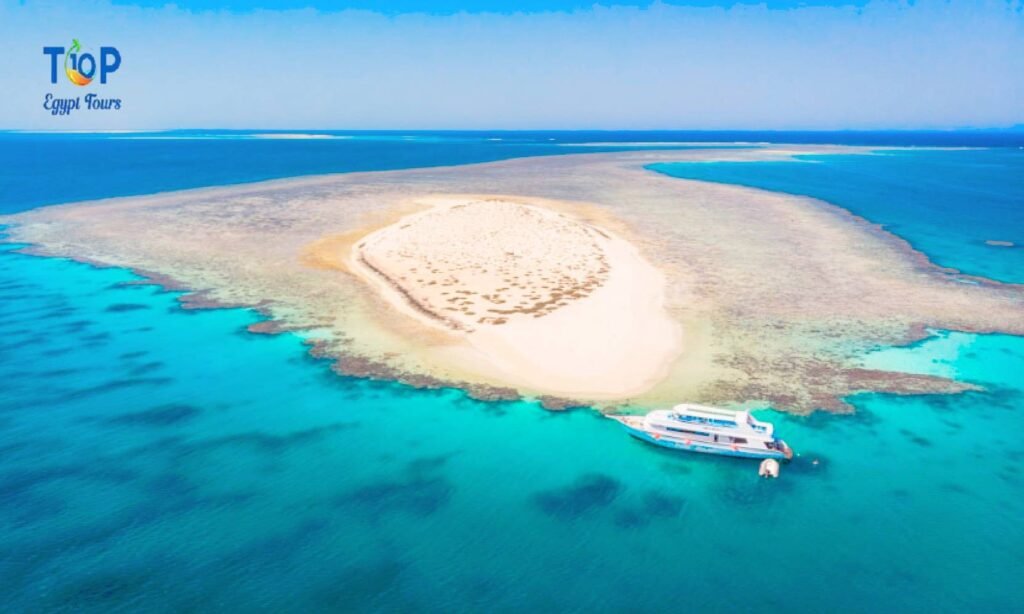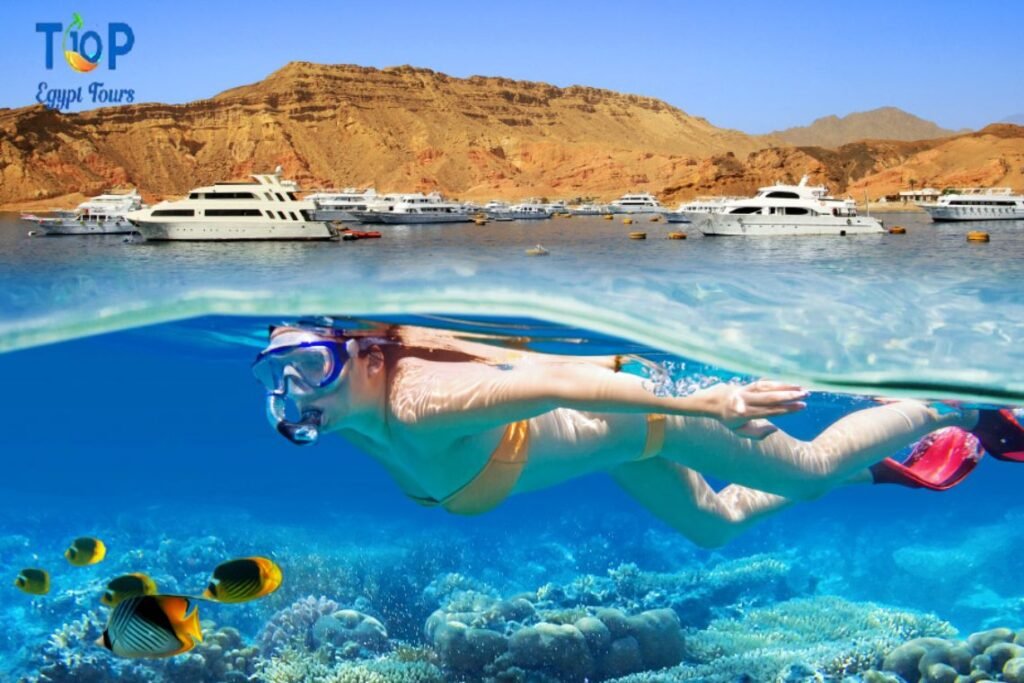Marsa Alam City Attractions, Discover the rich history, culture, and attractions of Marsa Alam City, Egypt. From ancient landmarks to modern experiences, uncover everything you need to know.
In this article, we will uncover for you the Marsa Alam City Attractions with Top Ten Egypt Tours.
Introduction Marsa Alam City Attractions
Marsa Alam is a vibrant coastal town located along the Red Sea in southern Egypt. Known for its stunning beaches, crystal-clear waters, and rich marine life, it has become a favored destination for tourists seeking both adventure and relaxation. This hidden gem of the Egyptian Riviera offers a unique blend of ancient heritage and modern tourist amenities, making it an attractive spot for diverse travelers.
Historically, Marsa Alam was a small fishing village, but over the years, it has evolved into a thriving resort destination. The town is strategically situated near several significant archaeological sites, including the extraordinary temples of Luxor and Karnak, as well as the remote charms of the Eastern Desert. Its proximity to the Red Sea has made Marsa Alam a hub for diving enthusiasts who flock to its coral reefs, teeming with colorful marine life and rare species.
Marsa Alam City Attractions extend beyond its stunning beaches. Visitors can explore ancient Egyptian history at nearby temples, indulge in vibrant local markets, and enjoy a plethora of outdoor activities, from snorkeling and diving to desert safaris. This comprehensive guide aims to provide you with everything you need to know about Marsa Alam, from its historical significance to the best attractions and experiences it offers. Prepare to embark on an unforgettable journey through this enchanting city!

Table of Contents Of Marsa Alam City Attractions
- Introduction to Marsa Alam City
- Historical Significance
- Top Attractions
- Cultural Experiences
- Modern Marsa Alam City
- Dining and Cuisine
- Shopping Spots
- Outdoor Activities
- Seasonal Travel Tips
- Getting Around the City
- Where to Stay
- FAQs
- Final Thoughts
1. Introduction to Marsa Alam City
Marsa Alam is nestled along the southeastern shores of Egypt, approximately 274 kilometers south of Hurghada and 600 kilometers from Cairo. The climate in Marsa Alam is predominantly desert, characterized by hot summers and mild winters. Average temperatures can soar above 30 degrees Celsius in the summer months and dip to around 15 degrees Celsius in winter, making it an attractive year-round destination for sun-seekers.
Historically, Marsa Alam’s roots can be traced back thousands of years, originally serving as an essential port for trade and transport in the Red Sea region. The town’s name, which translates to “harbor of the salt,” reflects its longstanding connection to maritime activities. In the recent past, development in tourism has led to a dramatic transformation, turning the town into a modern-day resort that emphasizes its beautiful natural scenery and historical surroundings.
One of the unique aspects of Marsa Alam is its diversity in recreational opportunities. While it is celebrated for its breathtaking beaches and underwater ecosystems, the city also exudes a rich cultural identity influenced by a mix of Bedouin and Egyptian traditions. Visitors can engage with the local community and experience traditional customs, enhancing their understanding of the culture.
In terms of demographics, Marsa Alam has experienced gradual growth, with an increasing number of residents involved in the hospitality and tourism sectors. The city’s growing popularity has led to improved infrastructure, including luxury hotels and vibrant markets catered to tourists.
Overall, Marsa Alam stands out as a unique destination where natural beauty meets historical significance. As visitors explore this captivating town, they are invited to immerse themselves in its rich heritage and enjoy the delightful combination of relaxation and adventure that Marsa Alam offers.
2. Historical Significance Of Marsa Alam City Attractions
Marsa Alam’s history is a tapestry woven from various cultures and eras, with roots that go back to ancient times. The area was originally inhabited by the ancient Egyptians, who relied on the Red Sea for trade and communication with neighboring regions. Archaeological findings in the vicinity indicate that the coastal area played a significant role in trade routes connecting Egypt to the rest of the world, including the Land of Punt, a famous trading partner renowned for its exotic goods.
During the Greco-Roman period, Marsa Alam (then known as “Marsa Alam Khamsa”) continued to hold strategic importance. Evidence of ancient settlements can be found along the Red Sea coast, where remnants of Roman forts and infrastructures suggest a flourishing maritime economy. This established the foundation for Marsa Alam’s historical relevance, especially as it served as a primary harbor for commerce and military expeditions.
In addition to its maritime significance, the surrounding areas are steeped in ancient history. Not far from Marsa Alam are some of the most renowned archaeological sites in Egypt, including the Temple of Karnak and the Valley of the Kings. These sites are pivotal in understanding the rich history of ancient Egyptian civilization. Luxor, often referred to as the “world’s greatest open-air museum,” lies within reach, attracting history enthusiasts eager to delve deeper into Egypt’s past.
The modern history of Marsa Alam began in earnest in the late 20th century, particularly around the 1990s when the Egyptian government initiated development plans to promote tourism in the region. Investments in infrastructure, including roads and airports, have helped transform Marsa Alam into a significant tourist destination, catering to a global audience eager to explore its natural and historical treasures.
Significant archaeological endeavors have continued to uncover the history of Marsa Alam. The discovery of ancient fossils and monuments in the area has shed light on the historical biodiversity of the region, further emphasizing its archaeological value. Notably, the nearby Wadi Gemal (Valley of the Camels) is a national park that encapsulates both historical and natural wonders. It showcases fossils believed to be millions of years old, alongside ancient Bedouin sites, representing the integration of natural history and human civilization.
Marsa Alam’s evolution from a humble fishing village to a bustling tourist hotspot illustrates the dynamic interplay between its historical significance and modern development. As visitors tread through the streets of Marsa Alam, they walk upon a land that has been shaped by millennia of human activity, trade, and cultural exchange. This rich historical backdrop enhances the overall experience of the city, inviting travelers to connect with the layers of history that define it.
3. Top Marsa Alam City Attractions
Marsa Alam may be known primarily for its stunning beaches and vibrant marine life, but the city and its surroundings also offer an array of captivating attractions that cater to various interests. Below is a comprehensive list of must-visit sites that capture the essence of what Marsa Alam has to offer.
1. Elphinstone Reef
Renowned worldwide among diving enthusiasts, Elphinstone Reef(Read More) is a dive site that boasts some of the most spectacular coral gardens. Located about 12 kilometers from Marsa Alam, it is famous for its breathtaking underwater biodiversity. Sharks, including the elusive oceanic whitetip and hammerhead species, glide through the currents, while colorful schools of fish create a vibrant underwater spectacle. This site is considered a must-do for anyone serious about diving.
2. Wadi Gemal National Park
This sprawling national park, situated to the north of Marsa Alam, offers a unique blend of ecological and historical experiences. Wadi Gemal is home to rare endemic species of flora and fauna, as well as ancient rock engravings that depict the life of the early Bedouin settlers. Exploring the park provides opportunities for hiking, photography, and discovering remnants of the past amidst stunning desert landscapes.

3. The Ancient Port of Marsa Alam
Visitors can explore the remnants of the ancient port, which served as a significant harbor during the Roman era. The archaeological site includes remnants of ancient structures and pottery that provide insight into the maritime history of the region. A guided tour of this site can offer a fascinating glimpse into the past, highlighting the importance of trade in ancient Egypt.
4. Pharaohs Island
Accessible by boat from Marsa Alam, Pharaohs Island is home to a beautifully preserved castle originally built by the Crusaders. The island is a popular destination for snorkeling and diving, with crystal-clear waters teeming with marine life. The fort itself provides breathtaking views of the Red Sea and surrounding landscape, making it an excellent spot for both exploration and relaxation.

5. Abu Dabbab Beach
Known for its soft sands and crystal-clear waters, Abu Dabbab Beach is a favorite among both tourists and locals. The beach is also famous for its resident dugongs (sea cows), which can sometimes be spotted grazing in the seagrass beds. It’s an ideal location for swimming, snorkeling, or simply lounging in the sun.
6. Marsa Alam’s Local Markets
Exploring local markets is an essential part of experiencing the culture of any city, and Marsa Alam is no exception. The local souk offers a plethora of goods, ranging from traditional handicrafts to spices and textiles. Interacting with local vendors provides insight into daily life and customs, making for a truly immersive experience.
7. Hamata Island
For those seeking adventure, a trip to Hamata Island offers both snorkeling and diving opportunities. The island is part of a national park and is surrounded by incredibly healthy coral reefs, making it a haven for marine biodiversity. Boat tours are available, ensuring visitors can enjoy a day of sun, sea, and stunning undersea views.

8. The Red Sea
No visit to Marsa Alam would be complete without experiencing the Red Sea itself. The sea is known for vibrant Pristine coral reefs, making it one of the best diving and snorkeling destinations in the world. Various operators provide diving excursions suited for all levels, ensuring everyone can partake in exploring the underwater marvels.
9. St. Francis Church
For a touch of spirituality, visitors can find St. Francis Church, which serves the Christian community in Marsa Alam. The church’s simple yet beautiful architecture offers a peaceful atmosphere for reflection and worship.
10. Supermarket and Shopping Malls
For modern conveniences and general shopping, Marsa Alam features several supermarkets and shopping malls. These places offer a variety of goods, from souvenirs to everyday necessities, catering to both locals and tourists alike.
Marsa Alam’s top attractions showcase the region’s natural beauty, historical significance, and rich biodiversity. Each site tells a story that contributes to the city’s allure, ensuring that visitors have a plethora of experiences to choose from during their stay.
4. Cultural Experiences
Marsa Alam’s cultural tapestry is woven from a rich blend of local traditions and the influences of the diverse communities that inhabit the area. Engaging with the local culture offers visitors deeper insights into the way of life in this vibrant coastal town.
Festivals and Celebrations
One of the most significant cultural experiences in Marsa Alam is partaking in local festivals. The Feast of Ramadan is celebrated with enthusiasm, bringing families together for shared meals and festivities. The atmosphere is vibrant, with traditional music, dance, and delicious food being central to the celebrations. Another pivotal festival is the Eid al-Fitr, which marks the end of Ramadan, celebrated with joyful gatherings and community feasts.
Traditional Music and Dance
Music is an integral part of Egyptian culture, and Marsa Alam is no exception. Visitors can enjoy traditional music performances featuring instruments like the oud (a stringed instrument) and the darbouka (a type of drum). Folk dances, often performed during special events, showcase the rich heritage of the region, adding to the lively atmosphere of local festivals.
Bedouin Culture
The Bedouins, the indigenous nomadic tribes of the region, represent an essential aspect of Marsa Alam’s cultural identity. Many tours include experiences that allow visitors to interact with Bedouin communities. These experiences often feature traditional meals, storytelling, and music, providing valuable insights into their customs and way of life. Participating in a Bedouin dinner beneath the stars in the desert can be a magical experience, showcasing their hospitality and unique lifestyle.
Local Art Scene
The local art scene in Marsa Alam features pottery, textiles, and handicrafts that reflect the area’s cultural identity. Many artisans use traditional techniques passed down through generations, producing exquisite items that make for perfect souvenirs. Art galleries and local shops offer a range of artistic creations, allowing visitors to take a piece of Marsa Alam’s culture home with them.
Culinary Traditions
Experiencing the local Egyptian cuisine is one of the best ways to immerse oneself in the culture of Marsa Alam. Traditional dishes showcase a blend of flavors influenced by the Mediterranean and Middle Eastern culinary traditions. Visitors can sample dishes such as koshari (a lentil and rice dish), grilled seafood, and fresh falafel from local eateries. Participating in a cooking class or food tour can also enhance understanding of local ingredients and cooking techniques.find more about the Egyptian food on this link
Marsa Alam’s cultural experiences are rich and varied, providing deeper connections to the community and its traditions. From festivals and music to food and art, the city’s cultural landscape invites visitors to engage with its vibrant heritage, resulting in a memorable travel experience.
5. Modern Marsa Alam City Attractions
Marsa Alam’s transformation from a quaint fishing village to a modern resort town is a testament to its growing importance as a travel destination. In recent decades, the development of tourism infrastructure has played a pivotal role in shaping the city today.
Economy and Lifestyle
The economy of Marsa Alam is now primarily driven by tourism and hospitality, which has become the main source of livelihood for many locals. The influx of international visitors has led to a boom in hotels, resorts, and restaurants, catering to the diverse needs of tourists. Additionally, local businesses thrive, providing excursions, diving opportunities, and traditional goods, fostering economic growth in the region.
Urban Development and Architecture
Marsa Alam’s urban landscape reflects its evolution, with a combination of modern and traditional architecture. Luxury resorts and villas line the coastline, offering stunning views of the Red Sea. These developments are often designed to blend seamlessly with the natural environment, utilizing sustainable practices and materials. While modernized areas attract tourists, traditional aspects of the town remain, showcasing a balance between progress and heritage.
Modern Attractions and Activities
In terms of attractions, the city now boasts numerous entertainment options. Water sports, including kite surfing and windsurfing, have gained popularity due to the favorable winds along the coast. Adventure tours, desert safaris, and eco-tours are also available, allowing visitors to explore the breathtaking landscapes surrounding Marsa Alam.
The nightlife in Marsa Alam has also evolved, with beach bars, restaurants, and clubs offering lively entertainment options for visitors looking to unwind after a day filled with activities. Live music and events frequently take place at various venues, enhancing the vibrant atmosphere of this modern coastal town.
Sustainability Efforts
As tourism continues to flourish, so too does the commitment to sustainable practices in Marsa Alam. Efforts to conserve marine ecosystems and promote responsible tourism are gaining momentum. Dive centers and resorts are increasingly integrating eco-friendly practices, including reef conservation initiatives and community engagement programs that educate visitors on preserving the area’s natural beauty.
In summary, modern Marsa Alam is characterized by its dynamic tourism industry, diverse attractions, and a commitment to preserving its natural and cultural heritage. As the city continues to evolve, it remains a beacon of beauty and adventure along Egypt’s Red Sea coast, inviting travelers from around the globe to experience its unique offerings.
6. Dining and Cuisine
The culinary landscape of Marsa Alam is as diverse as its cultural heritage. Visitors to the city can indulge in a wide array of dining options that reflect the fusion of traditional Egyptian flavors and international cuisine.
Traditional Dishes
Egyptian cuisine is rich in history, and Marsa Alam serves as a perfect destination to experience it firsthand. Traditional dishes such as koshari—made with rice, lentils, macaroni, and topped with a spiced tomato sauce—are widely available in local eateries. Another must-try dish is mahshi, which consists of vegetables such as zucchini or grape leaves stuffed with a spiced mixture of rice and meat.
Seafood lovers will revel in the freshness available in Marsa Alam’s coastal restaurants. Grilled fish, shrimp, and calamari are often prepared with a mix of spices and served alongside local breads and salads. The utilization of fresh ingredients makes dining in Marsa Alam a delightful experience for food enthusiasts.
Popular Restaurants
Marsa Alam is home to several restaurants that cater to a variety of tastes and preferences. Many establishments provide stunning views of the Red Sea, allowing diners to enjoy their meals against a backdrop of breathtaking sunsets. Popular restaurants often feature a mix of local and international dishes, ensuring that there is something for everyone.
One highly recommended venue is Elmasry Restaurant, celebrated for its fresh seafood and traditional Egyptian dishes. The establishment offers a cozy atmosphere and is frequented by locals, ensuring an authentic dining experience. Another noteworthy option is the Red Sea Restaurant, which emphasizes the freshness of its ingredients, serving up delectable dishes that highlight the region’s maritime bounty.
Culinary Experiences
For those looking to delve deeper into local cuisine, participating in a cooking class can provide an enriching experience. Numerous local chefs offer classes that guide participants through the preparation of traditional dishes, often incorporating local ingredients and spices. This hands-on experience can enhance appreciation for Egyptian cooking traditions and result in delicious meals that you can recreate at home.
Food Tours
Food tours in Marsa Alam are also a fantastic way to explore the culinary scene. These tours often take visitors to local markets and street vendors, providing opportunities to sample various dishes and learn about the ingredients and cooking methods unique to the region. Engaging with local cooks and vendors can lead to authentic experiences and insights into the community’s culinary practices.
7. Shopping Spots
Marsa Alam may not be a sprawling metropolis, but it offers a variety of shopping opportunities, from traditional markets to modern shopping centers. This diverse shopping landscape provides visitors with a chance to discover unique souvenirs and local handicrafts.
Local Markets and Souks
One of the best ways to immerse yourself in the local culture is by visiting traditional markets, known as souks. Marsa Alam’s local souk provides a vibrant atmosphere where visitors can browse through stalls filled with spices, textiles, and traditional handicrafts. Haggling is part of the shopping experience, adding an element of excitement to the process.
From handmade pottery and jewelry to local art and textiles, there is a wealth of unique items to discover. Engaging with local artisans offers insight into their crafts and the traditions behind them, making the shopping experience not just about purchasing items but also about cultural exchange.
Modern Shopping Centers
For those seeking more contemporary shopping experiences, Marsa Alam features several modern shopping centers. These establishments provide a range of products, from clothing and accessories to electronics and groceries. The convenience of modern shopping facilities caters to both locals and tourists, ensuring that diverse needs are met.
Unique Local Products
Visitors to Marsa Alam can take advantage of the regional specialties available for purchase. Handcrafted items, such as Bedouin jewelry and woven textiles, make for meaningful souvenirs that reflect the city’s culture and history. Many shops offer intricate designs that tell stories of the Bedouins and Egyptian traditions.
Additionally, locally produced food items, such as spices and oils, can be found in markets and grocery stores. These products make excellent gifts and provide a taste of Marsa Alam to friends and family back home.
Tips for Shopping
When shopping in Marsa Alam, it’s recommended to take cash, as not all vendors accept credit cards. Additionally, being respectful and engaging in friendly bargaining is part of the shopping culture, allowing for a fun interaction with local merchants.
In conclusion, shopping in Marsa Alam blends tradition with modernity, offering visitors a delightful array of options that showcase the culture and creativity of the region. Whether exploring local souks or browsing modern shops, there’s always something special to take home from this enchanting city.
8. Outdoor Activities
Marsa Alam is a playground for outdoor enthusiasts, offering a plethora of activities amid its stunning landscapes and breathtaking coastal scenery. Whether you’re looking for relaxation on pristine beaches or adventurous undertakings, the city has something for everyone.
Diving and Snorkeling
The most prominent outdoor activities in Marsa Alam revolve around the Red Sea’s rich marine environment. With numerous diving centers operating in the area, visitors can partake in diving trips that cater to all skill levels. The vibrant coral reefs, home to an array of marine life, provide exceptional snorkeling and diving experiences. Sites like Elphinstone Reef and Samadai Dolphin House are among the top spots where divers can see everything from colorful fish to majestic sea turtles and even dolphins.
Desert Safaris
For an alternative outdoor adventure, desert safaris in the Eastern Desert present an opportunity to explore the breathtaking landscapes beyond the coastline. Various operators offer excursions that include dune bashing, camel rides, and visits to hidden oases. Travelers can experience the stark beauty of the desert, witness stunning sunsets, and engage with local Bedouin communities, who share their knowledge of desert life and culture.
Hiking and Nature Trails
Marsa Alam’s natural surroundings also offer numerous hiking opportunities. The Wadi Gemal National Park, located nearby, features scenic trails suitable for hiking enthusiasts. Walking through the park allows visitors to experience the unique desert flora and fauna, as well as ancient rock engravings, making it a rewarding experience for nature lovers.
Water Sports
In addition to diving, Marsa Alam is ideal for a wide range of water sports. Activities such as windsurfing, kitesurfing, and paddleboarding have gained popularity due to the region’s favorable weather conditions. Rental facilities and lessons are available, catering to beginners and seasoned adventurers alike.
Beaches and Relaxation
Of course, simply relaxing on Marsa Alam’s beautiful beaches is a favored pastime for many visitors. With stretches of soft sand and clear waters, tourists can unwind while soaking up the sun. Many beachfront resorts and hotels provide amenities like beach lounges and umbrellas, ensuring a comfortable experience for those looking to relax.
9. Seasonal Travel Tips
When planning a trip to Marsa Alam, considering the timing of your visit can significantly enhance your experience. Here are some seasonal travel tips to help you make the most of your journey.
Best Times to Visit
The ideal time to visit Marsa Alam is during the cooler months, from October to April. During this period, temperatures are milder, making outdoor activities such as diving, hiking, and exploring comfortable. The weather is generally pleasant, with daytime temperatures ranging from 20 to 25 degrees Celsius.
Summer Considerations
The summer months, notably June through September, can see soaring temperatures, often exceeding 35 degrees Celsius. While the beach and swimming activities remain popular, it’s essential to stay hydrated and seek shade during the hottest parts of the day. Travelers may consider engaging in activities early in the morning or later in the afternoon to avoid extreme heat.
Weather Overview by Season
- Fall (September-November): This transitional period offers pleasant temperatures, making it a great time for outdoor exploration.
- Winter (December-February): Winters in Marsa Alam are mild and enjoyable. This is peak tourist season, resulting in a lively atmosphere and many events.
- Spring (March-May): Spring brings warm weather and is a lovely time for diving, as the visibility underwater is excellent.
Tips for Packing
Packing smartly for Marsa Alam is crucial for an enjoyable vacation. Essential items to bring include:
- Lightweight clothing for daytime (consider breathable fabrics).
- A swimsuit for beach activities.
- A light jacket or sweater for cooler evenings, particularly in winter.
- Sunscreen and sunglasses to protect against the strong sun.
- Comfortable shoes for hiking and exploring.
- Any diving or snorkeling equipment if you prefer to use your own.
Safety Considerations
Marsa Alam is generally safe for tourists; however, it’s always wise to exercise regular precautions, such as safeguarding personal belongings and avoiding isolated areas at night. Familiarizing yourself with local customs and regulations can enhance your travel experience and ensure respect for the community.
By understanding the seasonal nuances of Marsa Alam and preparing accordingly, travelers can optimize their journey and enjoy everything this remarkable destination has to offer.
10. Getting Around the City
Navigating Marsa Alam is relatively straightforward, with several options available for getting around the city and accessing nearby attractions. Understanding the transportation options can help travelers plan their trips more efficiently.
Transportation Options
- Taxis: Taxis are widely available in Marsa Alam. It’s advisable to negotiate the fare before getting into the taxi, as most do not have meters. Shared taxis (microbuses) are also a common mode of transportation, offering a budget-friendly option for short trips within the city.
- Rental Cars: For those wishing to explore at their own pace, renting a car can be a convenient option. Several local and international car rental companies operate in the city, providing a range of vehicles. Having a car allows for flexibility in visiting nearby attractions, such as the ancient sites in Luxor.
- Public Buses: While public buses are available, they may not be the most comfortable or reliable option for tourists. They tend to be crowded and are more suited for local travel.
Tips for Navigating the City
- Maps and GPS: Having a physical map or using a GPS application can be incredibly helpful, especially when venturing to less populated areas. Some resorts provide shuttle services to popular attractions.
- Language: While many locals in the tourism sector speak English, learning a few basic Arabic phrases can enhance communication and local interactions, proving beneficial during your travels.
Safety Advice for Travelers
Marsa Alam is generally safe; however, exercising common sense is always advised. Use reputable transportation services, especially at night, and keep an eye on personal belongings in crowded areas. Engaging with locals can often lead to valuable insights and recommendations, enhancing your experience.
Overall, getting around Marsa Alam is relatively easy, allowing visitors to explore both the city and its stunning surroundings with convenience and comfort.
11. Where to Stay In Marsa Alam City
Marsa Alam offers a wide range of accommodations that cater to different budgets and preferences, from luxurious beachfront resorts to charming guesthouses. Finding the right place to stay can enhance your experience while visiting the city.
Luxury Resorts
For those seeking an indulgent stay, Marsa Alam boasts numerous luxury resorts that combine stunning seaside views with world-class amenities. Resorts like the Hilton Marsa Alam Nubian Resort and Steigenberger Coraya Beach offer spacious rooms, gourmet dining options, and access to pristine beaches and dive centers. These establishments often feature spa services, pools, and various activities designed for relaxation and adventure.
Mid-Range Hotels
Mid-range options provide excellent value for travelers who want comfort without breaking the bank. Hotels such as The Three Corners Fayrouz Plaza Beach Resort or Hotel Resta Grand Resort offer quality accommodations with a range of amenities, including restaurants and pools, while still being close to the beach. Many of these hotels also provide organized excursions, making it easy to explore local attractions.
Budget Accommodations
Backpackers and budget-conscious travelers can find several guesthouses and hostels that offer a cozy atmosphere and a more intimate experience. Places like Blue Moon Hotel Marsa Alam and Marsa Alam Dive Center & Resort offer affordable rates and often provide easy access to diving and snorkeling activities, ensuring that guests can enjoy the natural wonders of the area without spending a fortune.
Unique Stays
For those seeking a memorable experience, some accommodations offer unique stays, such as camping in the desert or staying in eco-domes. These options are particularly appealing for adventurous travelers interested in connecting with nature while enjoying comfortable amenities.
Proximity to Attractions
When selecting accommodations, consider your itinerary and proximity to desired attractions. Some resorts are conveniently located near diving sites or cultural landmarks. Many establishments offer shuttle services to nearby locations, making it easier to explore the surrounding region.
12. FAQs Of Marsa Alam City Attractions Tours
1. Is Marsa Alam safe for tourists?
Yes, Marsa Alam is generally considered safe for tourists. Like any travel destination, it’s essential to remain vigilant and take standard safety precautions, such as safeguarding personal belongings and avoiding isolated areas at night.
2. What is the best time to visit Marsa Alam?
The best time to visit is between October and April when the weather is milder and suitable for outdoor activities. Summer months can be very hot, so visit during the cooler months for a more enjoyable experience.
3. Do I need a visa to visit Egypt?
Most travelers require a visa to enter Egypt. Many nationalities can obtain a tourist visa upon arrival at the airport; however, it’s advisable to check specific entry requirements based on your nationality before traveling.
4. What currency is used in Marsa Alam?
The currency used is the Egyptian Pound (EGP). It’s advisable to carry cash for small purchases, as not all places accept credit cards. ATMs are available in the city, but it’s wise to check access in smaller areas.
5. Are there any health precautions to take before traveling?
Travelers should ensure they are up to date with routine vaccinations and consider vaccinations for specific diseases based on their travel itinerary. Drinking bottled water is recommended, and travelers should be mindful of food hygiene.
6. Can I find activities for children in Marsa Alam?
Yes, many resorts offer family-friendly activities, including swimming, snorkeling, and organized excursions. Some hotels also provide kids’ clubs, ensuring a fun experience for younger travelers.
13. Final Thoughts
Marsa Alam is more than just a beautiful coastal city; it is a place rich in history, culture, and natural wonders. From its stunning coral reefs to its captivating local traditions and warm hospitality, Marsa Alam presents travelers with a unique and fulfilling experience.
Whether you’re drawn to the thrill of diving in crystal-clear waters, exploring ancient archaeological sites, or simply relaxing on pristine beaches, Marsa Alam has something for everyone. The city’s blend of modern amenities and rich heritage makes it a compelling destination for families, couples, adventurers, and culture enthusiasts alike.
As you plan your visit to Marsa Alam City Attractions, take the time to explore its diverse attractions, engage with the local community, and savor the delicious cuisine. Understanding the local customs and soaking in the culture can enrich your journey in ways that create lasting memories.
Conclusion: Embrace the allure of Marsa Alam, and let it cast its spell on you. With its breathtaking landscapes and endless opportunities for exploration, your visit to Marsa Alam City Attractions will undoubtedly be a highlight of your travel experiences.
Discover More Excursions And Activities in Marsa Alam.
1- Desert Super Safari Excursions From Marsa Alam

